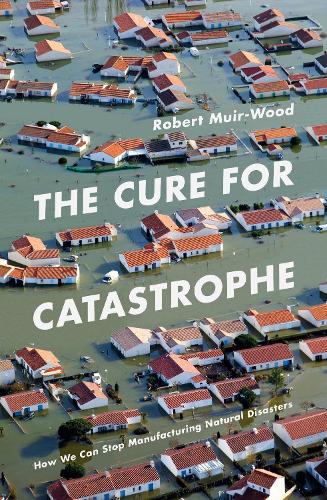
The Cure for Catastrophe: How We Can Stop Manufacturing Natural Disasters
(Hardback)
Publishing Details
The Cure for Catastrophe: How We Can Stop Manufacturing Natural Disasters
By (Author) Robert Muir-Wood
Oneworld Publications
Oneworld Publications
26th October 2016
United Kingdom
Classifications
General
Non Fiction
Natural disasters
363.347
Physical Properties
Hardback
368
Width 153mm, Height 234mm, Spine 31mm
Description
Why did no one consider that a tsunami could disable the nuclear power plant in Fukushima Why did so many die when Katrina flooded New Orleans Not so long ago we could only focus on rescuing and sheltering survivors - now we can anticipate many natural disasters and plan for them. In dozens of cities around the world, we're able to identify the specific buildings that will be shaken apart, blown down or reduced to rubble. Yet every year, for reasons of politics and inertia, we fail to act. Despite a revolution in our understanding of these catastrophes, since 2000 they've killed more people than ever before. Taking us on a fascinating journey through the history of catastrophe science, with forensic examinations of the most devastating cataclysms in living memory, Robert Muir-Wood provides a riveting account of our attempts to tame the most extreme forces of nature. Combining a global span with insights from the latest climate and catastrophe modelling, The Cure for Catastrophe explores the extraordinary opportunity we now have to transform what we build, where we live and how warnings are communicated - decisions that could save millions of lives.
Reviews
In its correction of common myths and challenge to the natural disaster status quo, this is a vital read.
* Geographical Magazine *[A] wrenching indictment of humanitys shortsightednessMuir-Wood shows greedy developers and corporations playing down risks to cut immediate costs and politicians gaining popularity when they dole out disaster relief while money spent on preparedness wins no votes. Journalists exacerbate the problem by trumpeting the heroism of search-and-rescue teams and then quickly losing interest in the more systemic problems. Muir-Wood, himself a talented storyteller, makes a strong case for rewarding those who take comparatively dull precautions.
* Kim Tingley, New York Times Book Review *In eloquent prose, Muir-Wood recounts disasters of the past millennium from a variety of perspectives His message for the future is hopeful but demands changes in both policy and cultureThe Cure for Catastropheis beautifully written, thoughtful, and rigorous.
* Science *Muir-Wood provides a unique perspective on and comprehensive study of the complex world of managing natural disasters.
* Booklist *In his meticulous reportage on a number of environmental calamities over the past 300 years, the author offers a cautionary map of the route we took to arrive at this vital geologic moment.
* Publishers Weekly *This is a very important book. In it, Robert Muir-Wood, convincingly documents his claim that what we are prone to call natural disasters are in truth almost always caused by humans.
-- Robert M. May, Professor Lord May of OxfordMuir-Wood provides a fascinating expert guided tour of the history of catastrophes and how humans have responded to catastrophes.
-- Jeff Masters, co-Founder and Director of Meteorology of the Weather UndergroundA fascinating examination of the forensics of disastersReaders will find it hard to stop reading this excellent book and will share the author's perhaps futile yearning that elected officials have the courage to pass inconvenient laws and spend the electorate's money to prevent disasters.
* Kirkus, starred review *With beautifully crafted prose, Robert Muir-Wood reminds us that natural catastrophe is an oxymoronhurricanes, tornadoes, earthquakes and volcanoes are natural, but by building flimsy structures in dangerous places, we are the cause of catastrophe. With each riveting disaster story and every tale of policy failure, we become better armed with the knowledge of historical errors we need to avoid repeating them.
-- Kerry A. Emanuel, Professor of Atmospheric Science, MITAstuteReaders interested in natural disasters, climate change, and weather will be riveted by this comprehensive account.
* Library Journal *Muir-Wood provides a lucid explanation of the risks we face from natural disastersThe book is a must-read for anyone who wants to learn about the increasing exposure we face from natural disasters and what we can do to mitigate it.
-- Michael E. Mann, Director, Earth System Science Center at Penn State and author of Dire PredictionsDisaster expert Robert Muir-Woods study is science in the round, spanning centuries of catastrophes, key figuresforecasting, the intricacies of insuranceand detailed, workable recipe for resilience.
* Nature *Highly recommended reading for decision-makers, experts, planners, business and importantly for the public at large. Dr. Muir-Wood unveils why disasters are not natural, but man-made.
-- Margareta Wahlstrm, Former Special Representative of the UN Secretary-General for Disaster Risk Reduction (20092015)Author Bio
Robert Muir-Wood is head of research at the world's largest catastrophe modelling company, RMS, and a visiting professor at UCL's Institute for Risk and Disaster Reduction. A lead author on climate and catastrophe risk for two IPCC reports, including the Nobel Peace Prize-winning 4th Assessment, his expertise is sought worldwide. He lives in London.
